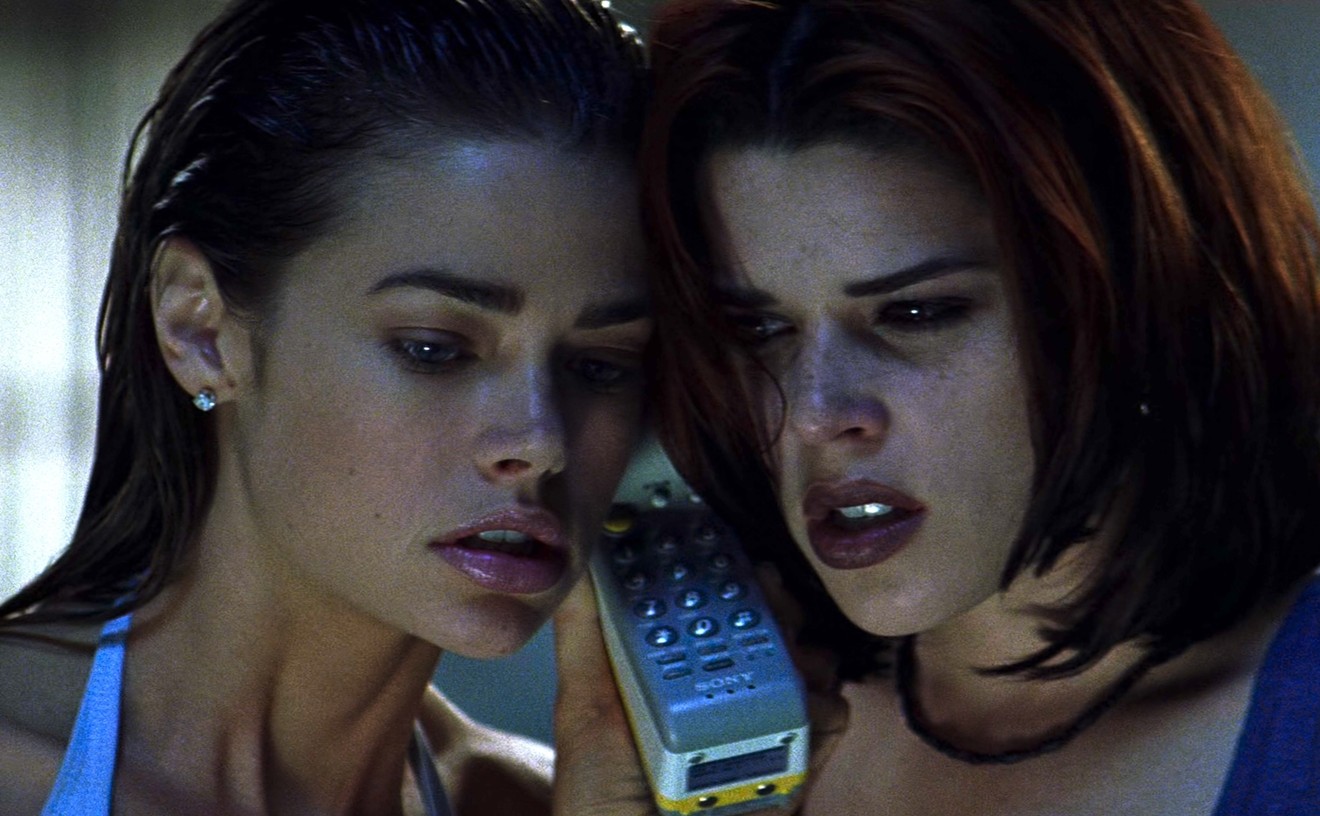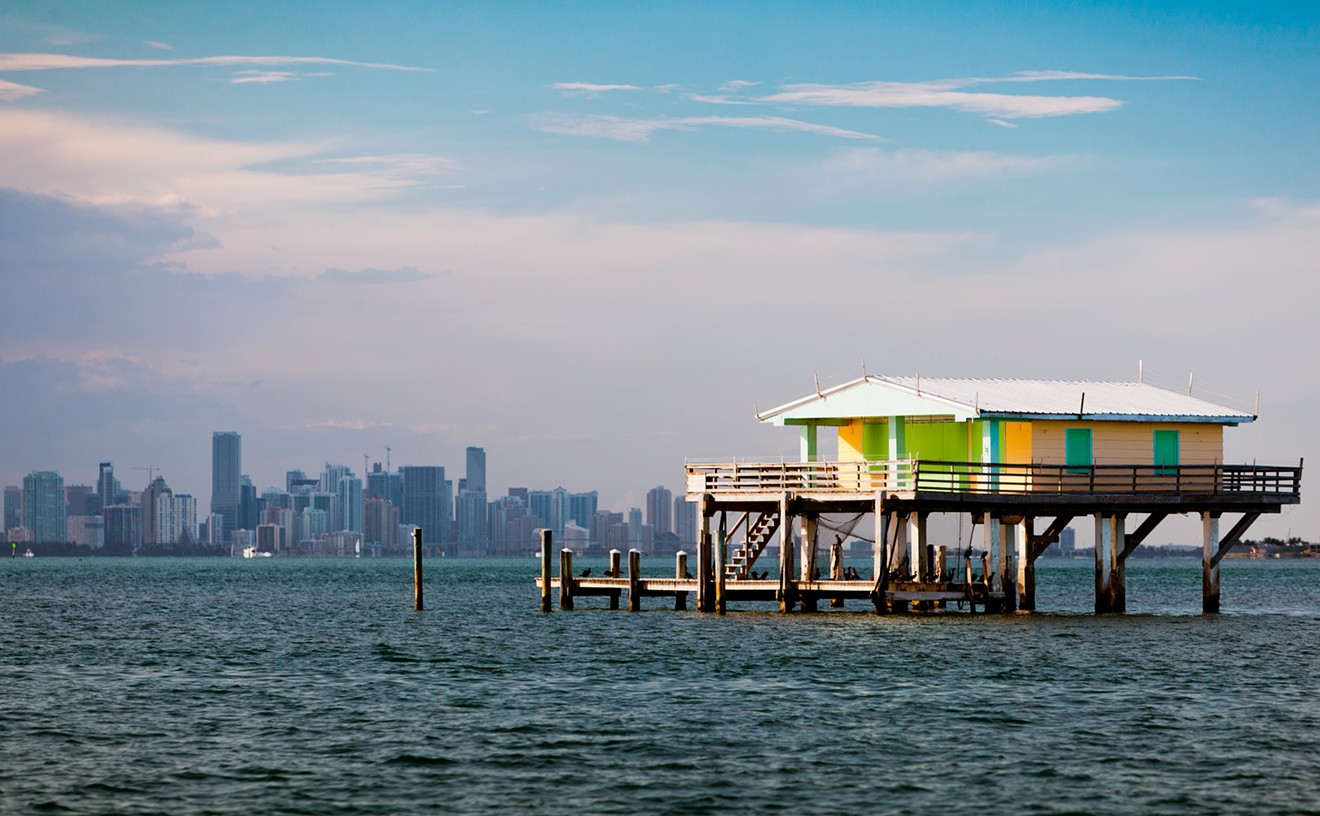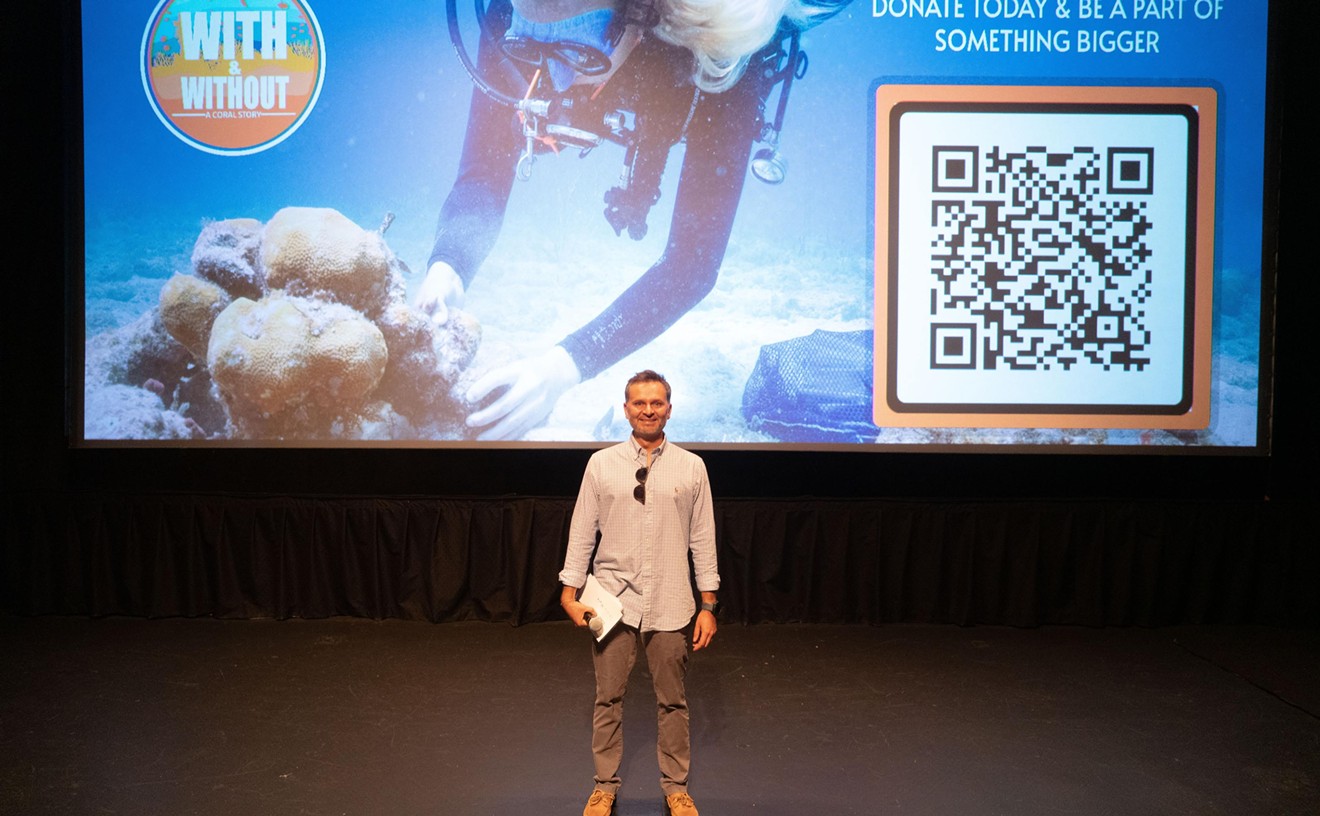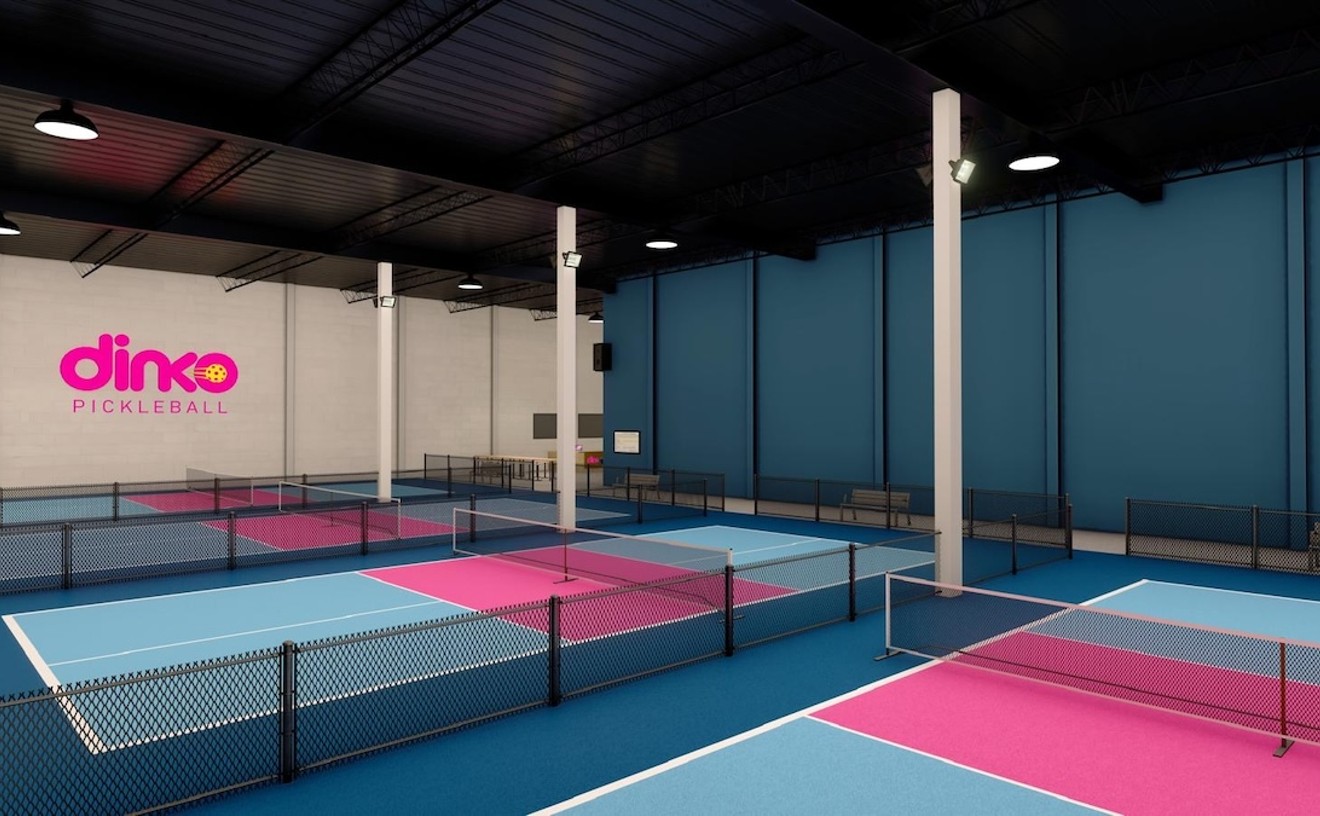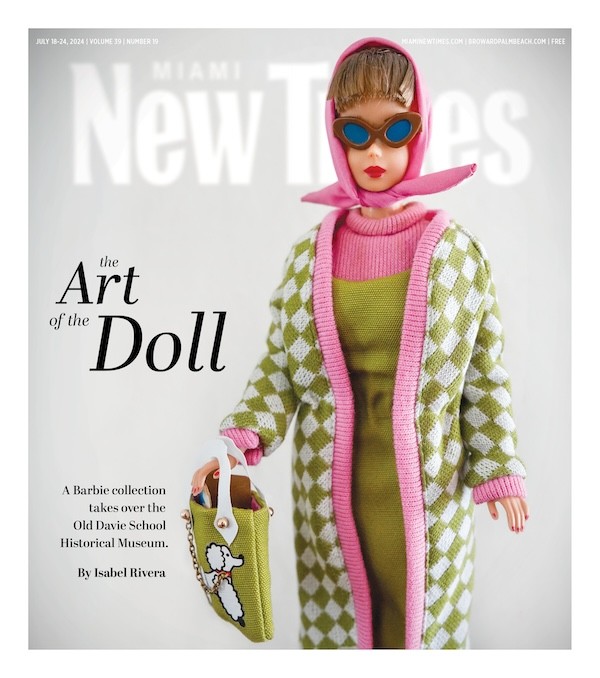South Beach was a much different place than it is today.
If you're brave enough to trek it out across the MacArthur for a day trip, you're likely to be greeted by an atmosphere that's a cross between the Vegas Strip, Disney's Epcot Center, and the Jersey Shore. It's a place where plump German tourists can bask in the glow of sun; surrounded by Deco style architecture, and palm fronds.
But back in the late '80s and early '90s, the southern tip of the barrier island was a bohemian paradise. Largely ignored by the rest of South Florida, South Beach became a low-rent haven for freaks, druggies, artists, and whoever else decided to make it their home.
Craig Coleman was one such outcast. A star of Manhattan's downtown scene in the '80s, he came down to Miami after the stock market crashed, taking the art world with it. Lured by investors looking to fund a nightclub, he came to Miami to get the city's artistic culture happening. The deal fell through and Coleman was left stranded, painting and putting on drag shows to support himself. Apart from the hilarious performances he put on and the work he bequeathed to his friends and followers, Coleman left an indelible mark upon the artistic culture of a city still experiencing birth pangs. A selection of his work is currently on view at Guccivuitton, in a show curated by Kevin Arrow, called "Summer Was a Drag."
"On October 31, Craig stepped into a Halloween costume as Varla," former Ocean Drive editor-in-chief Glenn Albin told New Times. "Both Craig and Varla spent every breathing minute painting large-scale works and commissioned portraits, writing songs for late-night club performances, recording video, writing a weekly column in Wire, creating a look and nocturnal personality and art empire that was focused on making Varla famous." Albin also contributed a painting to the exhibit, entitled Black Lezzies in the Shaft Era.
Dressed in a cocktail dress with a black wig and arched eyebrows, Coleman entertained the bustling crowd as his drag alter ego, Varla, at Semper's, a hotspot on Ocean Drive. The club became known for its Warholian sets and cooky characters from around the world that came to gawk and people watch. Even Madonna was said to frequent the club and belt out a few choice numbers along with the queens.
His work was a product of his surroundings. He painted everyone and everything around him, with a unique sense of humor entirely Coleman's own. Friends, fellow drag queens, patrons, and even Coleman himself became the subject of his work. In one canvas, he depicts Cuban rafters as they try to make their way to the U.S. Though in actuality most were starved political or economic refugees, through Coleman's prism they become sun-kissed and sex-crazed men stuck on a raft for a couple of days.
He was obsessed with making it big in as short of a timespan as possible. In the early '90s, he was diagnosed with HIV/AIDS. Unperturbed, he worked tirelessly on his paintings and performances. At one point, he converted his studio on Española Way to a makeshift talk-show set, furnished with old stained '60s furniture he found tossed out on the street. There he would record himself talking to whoever stopped by for a post-modern cable show he dubbed Varla TV, or V-TV for short.
"Craig was working against a clock that was ticking," said Albin. "A few of us had gone to visit him at Mount Sinai when he was really sick. In '94, AIDS was a one-way ticket; this was a few years before the cocktail. It stuck me in that sterile hospital environment that his death was the end of an era. What he injected into South Beach nightlife was never seen again."
Though he passed before his dreams of art-world stardom came to pass, Coleman's legacy lives on in the locals he touched while on his extended working holiday on the Beach. South Beach's art-lead reinvigoration has come full circle. Today, the neighborhood is practically unrecognizable from what it was several decades ago. Yet, for those who remember a time when SoBe was weird, Coleman's art lives on as a testament to how inimitable talent can make even the most desolate neighborhoods interesting and exciting.
"Summer Was A Drag" is currently on view at Guccivuitton through October 31. For more information, visit guccivuitton.net.

Audio By Carbonatix
[
{
"name": "Air - MediumRectangle - Inline Content - Mobile Display Size",
"component": "19274298",
"insertPoint": "2",
"requiredCountToDisplay": "2",
"watchElement": ".fdn-content-body",
"astAdList": [
{
"adType": "rectangle",
"displayTargets": "mobile"
}
]
},{
"name": "Editor Picks",
"component": "17482312",
"insertPoint": "4",
"requiredCountToDisplay": "1",
"watchElement": ".fdn-content-body",
"astAdList": [
{
"adType": "rectangle",
"displayTargets": "desktop|tablet"
},{
"adType": "rectangle",
"displayTargets": "desktop|tablet|mobile"
}
]
},{
"name": "Inline Links",
"component": "18711090",
"insertPoint": "8th",
"startingPoint": 8,
"requiredCountToDisplay": "7",
"maxInsertions": 25
},{
"name": "Air - MediumRectangle - Combo - Inline Content",
"component": "17482310",
"insertPoint": "8th",
"startingPoint": 8,
"requiredCountToDisplay": "7",
"maxInsertions": 25,
"watchElement": ".fdn-content-body",
"astAdList": [
{
"adType": "rectangle",
"displayTargets": "desktop|tablet"
},{
"adType": "rectangle",
"displayTargets": "desktop|tablet|mobile"
}
]
},{
"name": "Inline Links",
"component": "18711090",
"insertPoint": "8th",
"startingPoint": 12,
"requiredCountToDisplay": "11",
"maxInsertions": 25
},{
"name": "Air - Leaderboard Tower - Combo - Inline Content",
"component": "17482313",
"insertPoint": "8th",
"startingPoint": 12,
"requiredCountToDisplay": "12",
"maxInsertions": 25,
"watchElement": ".fdn-content-body",
"astAdList": [
{
"adType": "leaderboardInlineContent",
"displayTargets": "desktop|tablet"
},{
"adType": "tower",
"displayTargets": "mobile"
}
]
}
]





